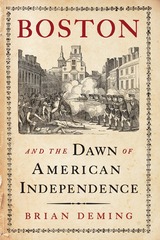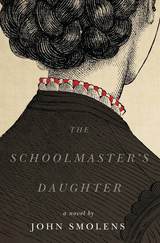3 books about Siege, 1775-1776

The Battle for the Fourteenth Colony
America’s War of Liberation in Canada, 1774–1776
Mark R. Anderson
University Press of New England, 2013
In this dramatic retelling of one of history’s great “what-ifs,” Mark R. Anderson examines the American colonies’ campaign to bring Quebec into the Continental confederation and free the Canadians from British “tyranny.” This significant reassessment of a little-studied campaign examines developments on both sides of the border that rapidly proceeded from peaceful diplomatic overtures to a sizable armed intervention. The military narrative encompasses Richard Montgomery’s plodding initial operations, Canadian partisan cooperation with officers like Ethan Allen, and the harrowing experiences of Benedict Arnold’s Kennebec expedition, as well as the sudden collapse of British defenses that secured the bulk of the province for the rebel cause. The book provides new insight into both Montgomery’s tragic Québec City defeat and a small but highly significant loyalist uprising in the rural northern parishes that was suppressed by Arnold and his Canadian patriot allies. Anderson closely examines the evolving relationships between occupiers and occupied, showing how rapidly changing circumstances variously fostered cooperation and encouraged resistance among different Canadian elements. The book homes in on the key political and military factors that ultimately doomed America’s first foreign war of liberation and resulted in the Continental Army’s decisive expulsion from Canada on the eve of the Declaration of Independence. The first full treatment of this fascinating chapter in Revolutionary War history in over a century, Anderson’s account is especially revealing in its presentation of contentious British rule in Quebec, and of Continental beliefs that Canadiens would greet the soldiers as liberators and allies in a common fight against the British yoke. This thoroughly researched and action-packed history will appeal to American and Canadian history buffs and military experts alike.
[more]

Boston and the Dawn of American Independence
Brian Deming
Westholme Publishing, 2013
How a New England Port City Became the Site of the Revolution That Changed the History of the World
In 1760, no one could imagine the American colonies revolting against Great Britain. The colonists were not hungry peasants groaning under the whip of a brute. They lived well. Land was cheap, wages were good, opportunities abounded. While many colonists had been in the New World for generations, they identified with Britain, and England was still “home.” Yet in the space of just fifteen years these sturdy bonds snapped. Boston—a town of just 16,000—lit the fire for American Independence. Brian Deming explains how and why in his lucid, lively, and deeply researched Boston and the Dawn of American Independence.
To dodge British taxes, Boston merchants for as long as anyone could remember had routinely smuggled in molasses from French and Spanish possessions in the Caribbean. Boston distillers transformed this sweet cargo into rum, the liquid gold traded around the world. But British authorities cracked down on smuggling and imposed the Sugar Act to help pay for the debts incurred during their wars against France. Then came the hated Stamp Act, a tax on documents, newspapers, and printed materials of all kinds. In courtrooms, in the press, and in the streets, Bostonians rallied in protest against taxation without representation. As anger swept America, Boston was at the center of the storm, which burst forth with the infamous massacre and the Boston Tea Party. By 1775, open warfare erupted at Lexington, Concord, and Bunker Hill. Boston and the Dawn of American Independence ties these scenes together with the people of the time, including John and Sam Adams, John Hancock, and Paul Revere, as well as Thomas Hutchinson, the beleaguered Massachusetts royal governor, and James Otis, the bombastic, unstable early patriot. Readers hear their voices, but also those of many amazing, colorful, and memorable personalities— feisty mob leaders, defiant Tories, terrified townspeople. Deming illuminates this epic story with views of everyday life inside taverns, outside newspaper offices, and along the wharves, and the political dramas in London and Philadelphia that shaped the destiny of an empire and gave rise to the world’s first modern democracy.
In 1760, no one could imagine the American colonies revolting against Great Britain. The colonists were not hungry peasants groaning under the whip of a brute. They lived well. Land was cheap, wages were good, opportunities abounded. While many colonists had been in the New World for generations, they identified with Britain, and England was still “home.” Yet in the space of just fifteen years these sturdy bonds snapped. Boston—a town of just 16,000—lit the fire for American Independence. Brian Deming explains how and why in his lucid, lively, and deeply researched Boston and the Dawn of American Independence.
To dodge British taxes, Boston merchants for as long as anyone could remember had routinely smuggled in molasses from French and Spanish possessions in the Caribbean. Boston distillers transformed this sweet cargo into rum, the liquid gold traded around the world. But British authorities cracked down on smuggling and imposed the Sugar Act to help pay for the debts incurred during their wars against France. Then came the hated Stamp Act, a tax on documents, newspapers, and printed materials of all kinds. In courtrooms, in the press, and in the streets, Bostonians rallied in protest against taxation without representation. As anger swept America, Boston was at the center of the storm, which burst forth with the infamous massacre and the Boston Tea Party. By 1775, open warfare erupted at Lexington, Concord, and Bunker Hill. Boston and the Dawn of American Independence ties these scenes together with the people of the time, including John and Sam Adams, John Hancock, and Paul Revere, as well as Thomas Hutchinson, the beleaguered Massachusetts royal governor, and James Otis, the bombastic, unstable early patriot. Readers hear their voices, but also those of many amazing, colorful, and memorable personalities— feisty mob leaders, defiant Tories, terrified townspeople. Deming illuminates this epic story with views of everyday life inside taverns, outside newspaper offices, and along the wharves, and the political dramas in London and Philadelphia that shaped the destiny of an empire and gave rise to the world’s first modern democracy.
[more]

The Schoolmaster's Daughter
John Smolens
Michigan State University Press, 2019
In April 1775 Abigail Lovell’s family is divided politically―while her father, who has for decades been schoolmaster at the prestigious Latin School, remains loyal to King George III, she and her two brothers engage in undercover activities designed to destabilize the British occupation of Boston. Her sickly older brother, James, operates the patriots’ spy ring, while Abigail acts as a courier, eluding increasingly aggressive British patrols, and her younger brother, Benjamin, slips out of the city to fight alongside Abigail’s love, Ezra, in the battles at Lexington and Concord. With the help of her friend, Rachel Revere, Abigail smuggles money and supplies out to her brother, Ezra, and Rachel’s husband, Paul. But when a British sergeant is found murdered, Abigail stands accused before a military tribunal, and on the eve of the British assault on Bunker Hill she and her brothers plot to influence the outcome of that pivotal battle. In the tradition of The Name of theRose and Girl with the Pearl Earring, The Schoolmaster’s Daughter is the story of a family torn asunder by political strife and a determined young woman who makes courageous sacrifices for the patriot cause at the outbreak of the American Revolution.
[more]
READERS
Browse our collection.
PUBLISHERS
See BiblioVault's publisher services.
STUDENT SERVICES
Files for college accessibility offices.
UChicago Accessibility Resources
home | accessibility | search | about | contact us
BiblioVault ® 2001 - 2024
The University of Chicago Press









